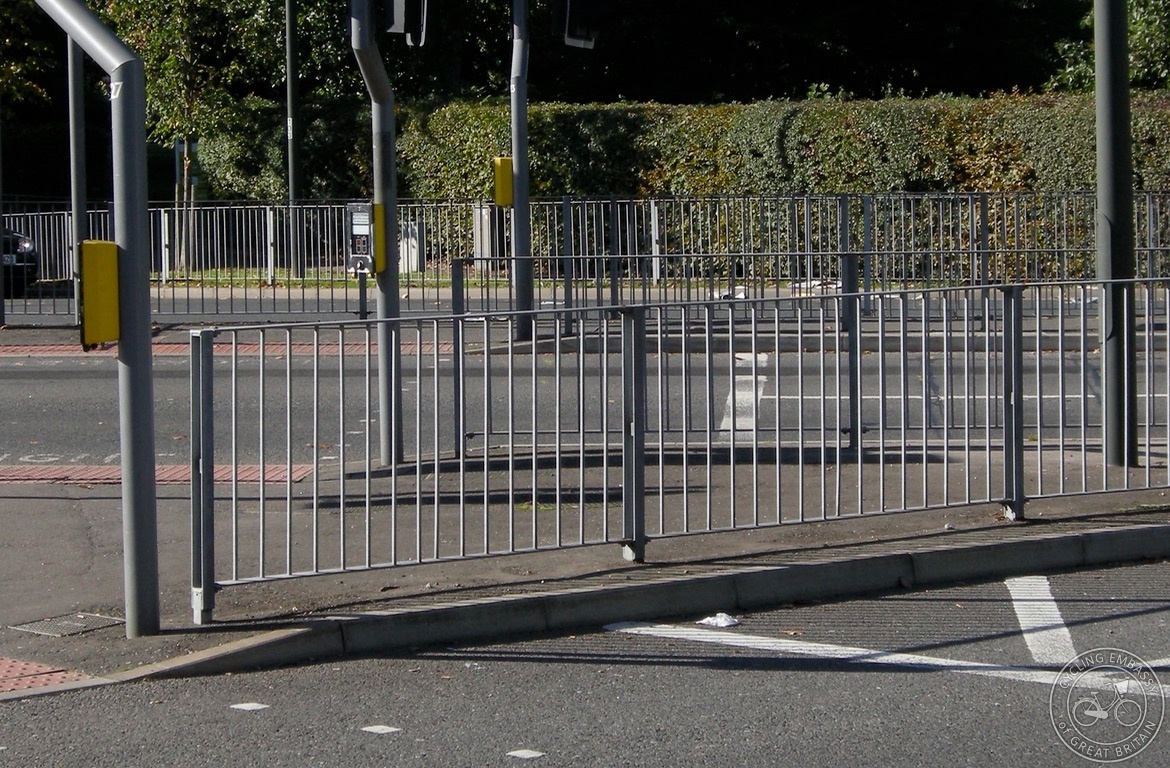Guardrail
A fence along the outside edge of a footway, to prevent pedestrians crossing or walking on or across the carraigeway, along desire lines. It is not designed to protect pedestrians from motor traffic - only to prevent them crossing where they might want to.

Guardrail is potentially dangerous for people cycling, particularly on sharp corners, as it can block an emergency route away from being crushed under the wheels of heavy vehicles.
Guardrail is used to guide pedestrians to particular crossing points, typically for the purposes of facilitating motor traffic flow.
It is often justified on the grounds of safety; however, in practice, the safety case is unproven. The DfT's LTN 2/09, Pedestrian Guardrailing, compared sites with and without guardrailing and actually found that the casualty record at sites without guardrailing was slightly better.
Guidance from CIHT (the Chartered Institution of Highways and Transportation) states
Although guardrail can be useful in limited circumstances, it is visually and physically intrusive, reduces the width of available footway, and can be dangerous for people riding bicycles on the carriageway who may become trapped between vehicles and guardrail when they could otherwise “escape” onto the footway. Guardrail is provided to restrict the movement of pedestrians, and unless their intended use is clear to pedestrians, they will be resented, and in many cases, people will simply walk on the live traffic side if it suits their desire line. There is some risk that guardrail leads to drivers becoming less aware of the presence of pedestrians (especially children because of their height), and this could create complacency in driving behaviour.
Guardrail should only ever be considered for locations where there is a real risk of pedestrians being hit by traffic should they walk onto the carriageway.
